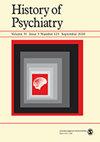下载PDF
{"title":"通过 eye to I© 干预模式探索游戏的社会阶段。","authors":"Sara Ann Schuchert, Shivangi Khattar, Purva Tekkar, Aastha Rathour, Savita Dawar, Parul Gupta","doi":"10.1177/13591045231177477","DOIUrl":null,"url":null,"abstract":"<p><p>The study explores the role of the Eye to I© intervention model in facilitating advancement through social stages of play in which skills contribute to the quality of social interaction and communication in children with autism. Data were collected on 11 participants, ages of 2-6 years, formally diagnosed with autism, receiving Eye to I© Social Communication therapy at Potentials Therapy Center, New Delhi, India. Eye to I© is developed in-house at Potentials and is further discussed in the paper. All participants attended a form of group intervention. A mixed-method design included quantitative measures administered pre and post intervention (Communication DEALL Developmental Checklist, Communication Matrix) and video coding of Social Communication sessions. Qualitative measures were semi-structured parent interviews conducted at the end of intervention. Thematic analysis and quantitative statistical analysis results show that by the end of the Eye to I© intervention period children engaged in social stages of play of greater developmental complexity and showed increased scores in assessments of social skills as well as generalization of skills. This suggests that skill acquisition necessary to directly support two diagnostic criteria areas of autism as per DSM-V; i.e., communication and social interaction occurred during the period of intervention.</p>","PeriodicalId":48840,"journal":{"name":"Clinical Child Psychology and Psychiatry","volume":" ","pages":"928-948"},"PeriodicalIF":1.8000,"publicationDate":"2024-07-01","publicationTypes":"Journal Article","fieldsOfStudy":null,"isOpenAccess":false,"openAccessPdf":"https://www.ncbi.nlm.nih.gov/pmc/articles/PMC11188555/pdf/","citationCount":"0","resultStr":"{\"title\":\"Exploring social stages of play through eye to I© intervention model.\",\"authors\":\"Sara Ann Schuchert, Shivangi Khattar, Purva Tekkar, Aastha Rathour, Savita Dawar, Parul Gupta\",\"doi\":\"10.1177/13591045231177477\",\"DOIUrl\":null,\"url\":null,\"abstract\":\"<p><p>The study explores the role of the Eye to I© intervention model in facilitating advancement through social stages of play in which skills contribute to the quality of social interaction and communication in children with autism. Data were collected on 11 participants, ages of 2-6 years, formally diagnosed with autism, receiving Eye to I© Social Communication therapy at Potentials Therapy Center, New Delhi, India. Eye to I© is developed in-house at Potentials and is further discussed in the paper. All participants attended a form of group intervention. A mixed-method design included quantitative measures administered pre and post intervention (Communication DEALL Developmental Checklist, Communication Matrix) and video coding of Social Communication sessions. Qualitative measures were semi-structured parent interviews conducted at the end of intervention. Thematic analysis and quantitative statistical analysis results show that by the end of the Eye to I© intervention period children engaged in social stages of play of greater developmental complexity and showed increased scores in assessments of social skills as well as generalization of skills. This suggests that skill acquisition necessary to directly support two diagnostic criteria areas of autism as per DSM-V; i.e., communication and social interaction occurred during the period of intervention.</p>\",\"PeriodicalId\":48840,\"journal\":{\"name\":\"Clinical Child Psychology and Psychiatry\",\"volume\":\" \",\"pages\":\"928-948\"},\"PeriodicalIF\":1.8000,\"publicationDate\":\"2024-07-01\",\"publicationTypes\":\"Journal Article\",\"fieldsOfStudy\":null,\"isOpenAccess\":false,\"openAccessPdf\":\"https://www.ncbi.nlm.nih.gov/pmc/articles/PMC11188555/pdf/\",\"citationCount\":\"0\",\"resultStr\":null,\"platform\":\"Semanticscholar\",\"paperid\":null,\"PeriodicalName\":\"Clinical Child Psychology and Psychiatry\",\"FirstCategoryId\":\"3\",\"ListUrlMain\":\"https://doi.org/10.1177/13591045231177477\",\"RegionNum\":4,\"RegionCategory\":\"医学\",\"ArticlePicture\":[],\"TitleCN\":null,\"AbstractTextCN\":null,\"PMCID\":null,\"EPubDate\":\"2023/5/26 0:00:00\",\"PubModel\":\"Epub\",\"JCR\":\"Q3\",\"JCRName\":\"PSYCHIATRY\",\"Score\":null,\"Total\":0}","platform":"Semanticscholar","paperid":null,"PeriodicalName":"Clinical Child Psychology and Psychiatry","FirstCategoryId":"3","ListUrlMain":"https://doi.org/10.1177/13591045231177477","RegionNum":4,"RegionCategory":"医学","ArticlePicture":[],"TitleCN":null,"AbstractTextCN":null,"PMCID":null,"EPubDate":"2023/5/26 0:00:00","PubModel":"Epub","JCR":"Q3","JCRName":"PSYCHIATRY","Score":null,"Total":0}
引用次数: 0
引用
批量引用


